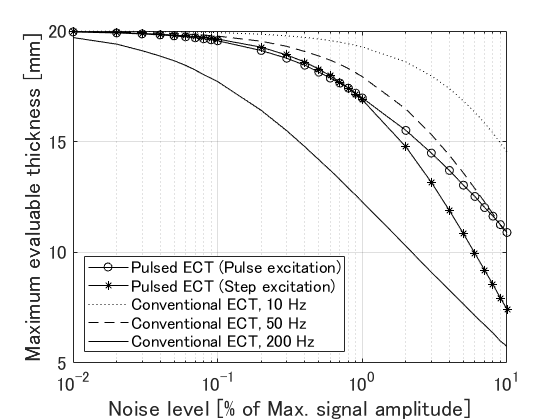2021年12月28日,收到邮件,与日本东北大学游佐实验室共同发表论文"Whether "Rich in Frequency" Means "Rich in Information" in Pulsed Eddy Current Testing to Evaluate Plate Thickness: Numerical Investigation" 被《Materials Transactions》杂志录用。
该论文采用仿真方法探究脉冲涡流检测技术中频率成分的有效性。论文重点结论为:尽管脉冲涡流技术常以信息丰富为优点,但更应该强调的是提取有用的和信噪比高的信息。更多的信息并不一定会带来更多的优势,相反,更多的无用信息会引入信噪比差的成分,并导致特征量与待测量线性度变差。
论文摘要如下:
Whether "Rich in Frequency" Means "Rich in Information" in Pulsed Eddy Current Testing to Evaluate Plate Thickness: Numerical Investigation
Noritaka Yusa1*, Jiuhao Ge 1,2,3 and Mengbao Fan4
1 Department of Quantum Science and Energy Engineering, Graduate School of Engineering, Tohoku University, 6-6-01-2, Aramaki Aza Aoba, Aoba-ku, Sendai, Miyagi 980-8579, Japan
2 Nondestructive Detection and Monitoring Technology for High Speed Transportation Facilities, Key Laboratory of Ministry of Industry and Information Technology, Nanjing University of Aeronautics and Astronautics, Nanjing, Jiangsu, 210016, China
3 JSPS International Research fellow, Graduate School of Engineering, Tohoku University, 6-6-01-2, Aramaki Aza Aoba, Aoba-Ku, Sendai, Miyagi 980-8579, Japan
4 School of Mechatronic Engineering, China University of Mining and Technology, Xuzhou, Jiangsu, 221116, China
This study investigated whether it is really reasonable to insist that being "rich in frequency" represents an advantage of pulsed eddy current testing when compared with conventional eddy current testing. More specifically, this study compared the capabilities of pulsed eddy current testing and conventional eddy current testing in evaluating the thickness of non-ferromagnetic plates with thicknesses of 1–20 mm. To avoid any instrumentation effect, the investigations were performed based on signals obtained by finite element simulations, and the correlations between the thickness and a scalar feature value extracted from measured signals were discussed. This study considered two typical excitation waveforms, a Gaussian pulse and a step function simulating the sudden termination of the excitation currents, and four simple and conventional scaler feature values: peak amplitude, time to peak, time to attenuate the signal into a certain level, and logarithmic slope of the signal attenuation. Narrowing the Gaussian pulse led to difficulty in terms of the thickness evaluation, although it should make the pulse richer in frequency. Subsequent analyses compared the capabilities of the pulsed and conventional eddy current testing to evaluate plate thickness under the assumption that they have the same signal-to-noise ratio. The results revealed that the error in the thickness evaluation using the pulsed eddy current testing was somewhat larger than the error using the conventional eddy current testing with three frequencies. Whereas the target of this study was limited to the thickness evaluation of non-ferromagnetic plates, the results of this study point out that what is important is using frequencies in a proper range as well known in the conventional eddy current testing. They also indicate that it is not reasonable to postulate that "richness in frequency" always leads to a better nondestructive evaluation when using the pulsed eddy current testing.
Graphical Abstract:

葛玖浩
2021.12.28
